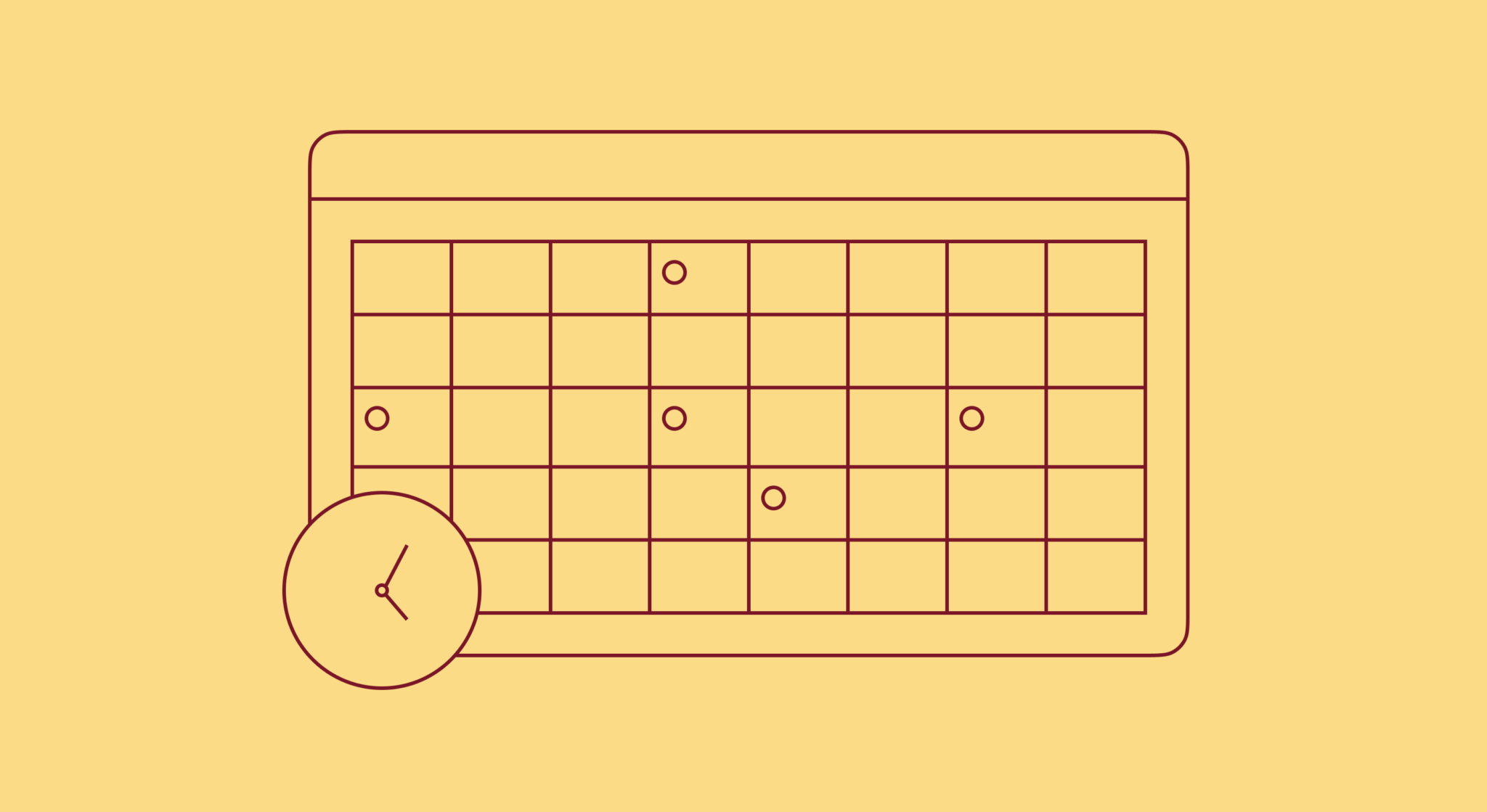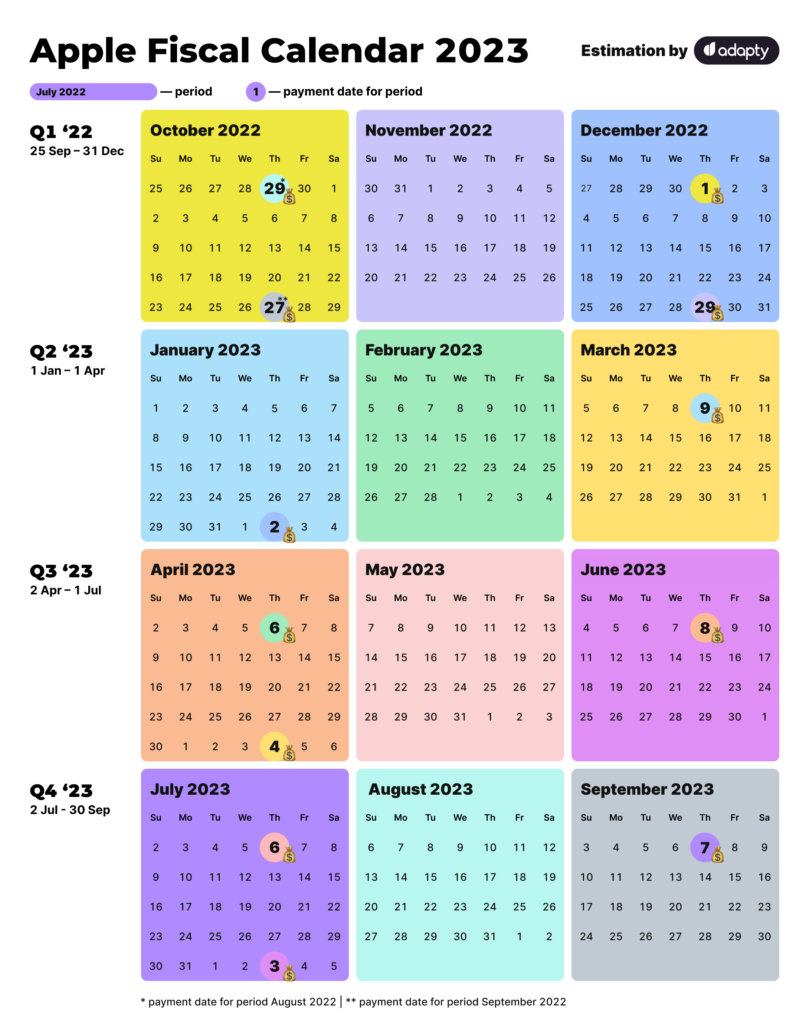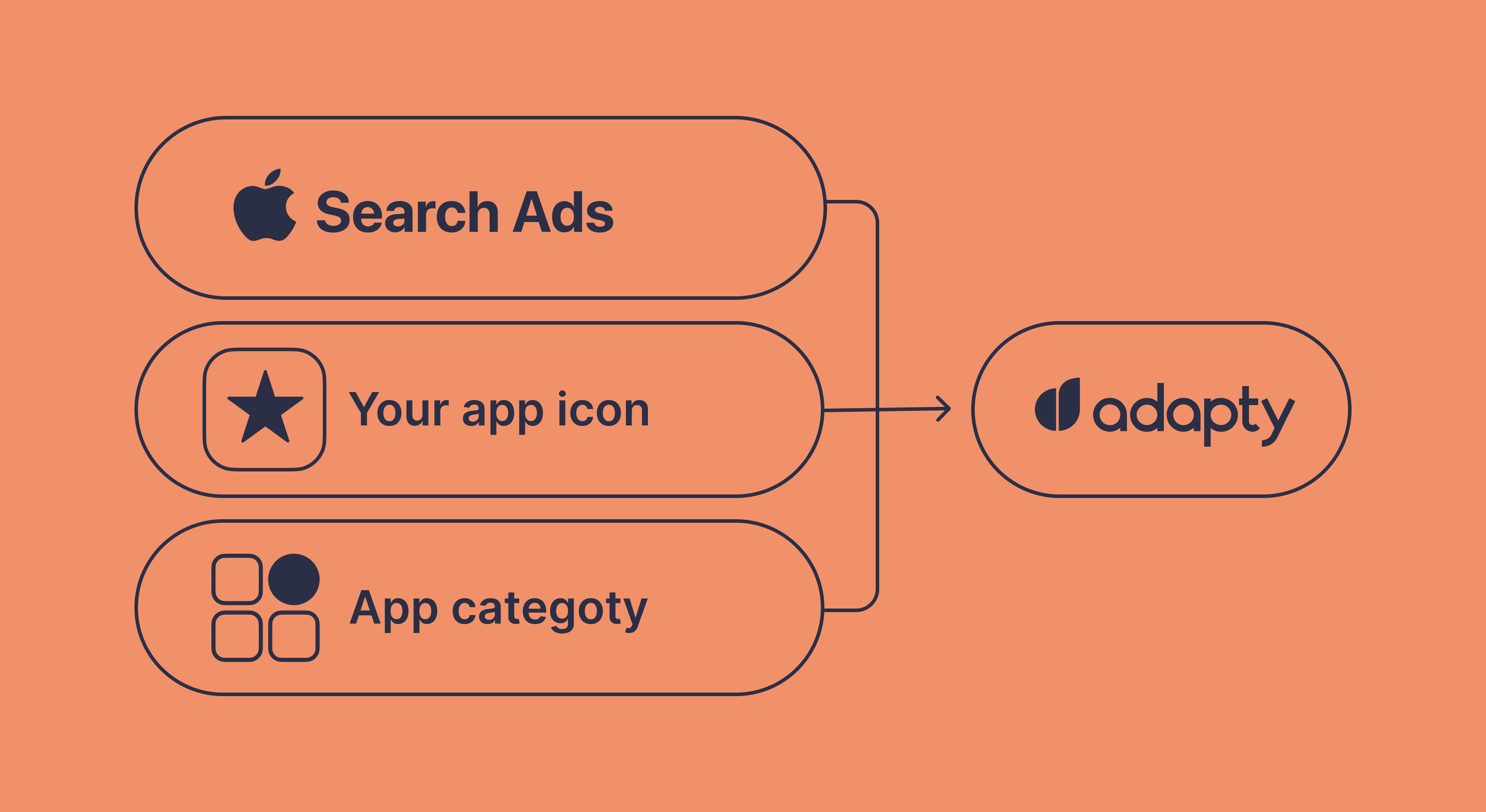
Trends-insights
20 min read
April 28, 2021

Updated: November 15, 2023
6 min read

Apple fiscal year is a four-quarter calendar used for scheduling orderly payments for mobile app developers.
So, why do we have to care about it?
Once you upload your mobile app to the Apple Store, you’ll start getting payments on designated days. And Apple’s fiscal calendar becomes your go-to resource for keeping track of those days. Apple’s fiscal year differs from what we usually refer to as a fiscal year, so we’ll see what peculiarities and rules it has.
Here’s the calendar for 2023 with exact payment dates:

The rules are as follows:
Apple’s fiscal quarters this year look like this:
Q1 – Sep 25 – Dec 31
Q2 – Jan 1 – Apr 1
Q3 – Apr 2 – Jul 2
Q4 – Jul 2 – Sep 30
Now let’s see how exactly this fiscal calendar works. Following the rule that the first month consists of 35 days, and the payment terms are NET 33 we can predict that the September payment (which is the term Aug 28 – Sep 24 of the previous fiscal year) will be provided on Sep 27 on Thursday, while the October payment (Sep 25 – Oct 29) should be sent on Dec 1, and so on.
Feel free to check the Adapty estimation of Apple Fiscal Calendar 2023. Please, pay attention to the colors of the periods: each corresponds to a concrete day.
You cannot consider the money from the App Store yours until Apple actually sends it. The funds on your Developer Account aren’t the funds you may use. These 33-day delays may affect the economics of your app and lead to funding gaps. May be a rather crucial mistake to wrongly plan your finances while your app is promoted through paid traffic only. Google and Facebook never care about your finances, they’re gonna bill you anyway 🙂
As previously mentioned, Ad networks want their services to get paid on time, while Apple pays with a delay. Your ad campaigns optimize not as fast, so it’s not a good idea to stop your ads and restart them in the future. If you set campaigns on hold for a long period, they won’t perform as they used to. So, if you purchase installs at a reasonable cost, try to keep them working as long as possible. And don’t even think of having your ads unpaid and leaving your ad accounts with debts.
What’s plain and simple often gets missed. Don’t forget to match your results and your earnings the right way. Don’t look at payments, look at the stats you have. For example, your December payment will be related to Nov 27 – Dec 31, while the December costs will be for the period Dec 1 – 31. Just keep it in mind and don’t consider “monthly payment” as payment for a fiscal month 🙂
Subscription app’s economics is built mostly on a “zero-profit” basis. That means CAC = LTV almost all the time. Even a small disorder may cause your business to die. Subscription recovery is long term, and having an app based on in-app subscriptions is a long term business itself! That’s why under any circumstances try to have some extra resources: if you learn to deal with Apple’s delays, your business will have the chance to survive.
Apple Fiscal Calendar for 2022
Apple Fiscal Calendar for 2024
2024 subscription benchmarks and insights
Get your free copy of our latest subscription report to stay ahead in 2024.
Recommended posts

Trends-insights
20 min read
April 28, 2021

Product-releases
January 13, 2022